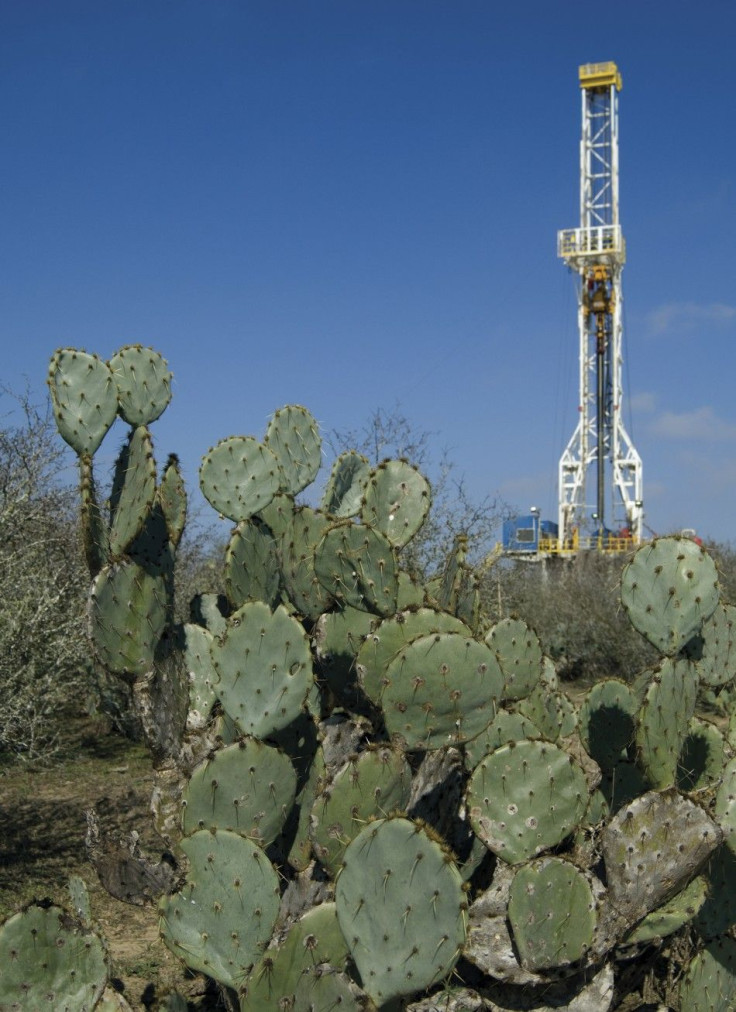South Texas Natural Gas And Oil Boom Raked In $25 Billion in 2011: Study

Natural gas and oil drilling in South Texas, an energy-rich part of the state that has traditionally been either underdeveloped or stagnant, has injected billions into the local economy, and it has helped revive local communities. In fact, according to a study last year, it generated more than $25 billion in revenue.
On Wednesday, the University of Texas at San Antonio released its first figures detailing the economic impact the state's latest shale energy boom has had on communities in South Texas.
The Eagle Ford Shale has proven to be one of the most important economic engines in the state, said Dr. Thomas Tunstall, director of the UTSA Center for Community & Business Research, who led the study. In 2011 alone, the [formation] generated over $25 billion in revenue, supported 47,000 full-time jobs in the area, and provided $257 million in local government revenue.
Now, thanks to horizontal hydraulic fracturing -- the controversial technique known as fracking, which many oppose because of its alleged pollution risks -- oil and natural gas companies have been able to tap underground resources more efficiently, causing an energy boom in the region similar to those already seen in some northern states, such as Pennsylvania.
The study also showed that shale development has helped pay $3.1 billion in salaries and benefits to workers, and it added $12.6 billion in gross regional product and more than $358 million in state revenues. The development also spurred a triple-digit sales tax revenue increase in various local counties.
The added development, the report said, is helping build schools and hospitals and will help generate an estimated 117,000 full-time jobs by 2021.
We view the Eagle Ford activity as an economic opportunity of a lifetime, said Mario Hernandez, president of the San Antonio Economic Development Foundation. The key goal is the increase in investment and jobs, and if the communities will partner with the private companies that are creating these jobs, it can be a win-win for everybody.
Since 2007, oil and natural gas development in the Eagle Ford has continuously swelled, and production volumes have increased exponentially.
As of March 15, there were 3,649 permits for drilling along the formation, the Texas Railroad Commission said. The commission regulates the oil and natural gas industries in the state. That number is up from the roughly 2,500 permitted wells in September 2011.
Between 2010 and 2011, oil production increased by more than six times to 28.3 million barrels. Natural gas production more than doubled to 271.8 billion cubic feet of natural gas, and natural gas condensate production tripled to 21 million barrels, the UTSA report said.
The U.S. Geological Survey estimates there could be a much as 141 million barrels of oil, 502 billion cubic feet of natural gas and 16 million barrels of natural gas liquids tied up in the Eagle Ford Shale formation.
Ricky McNeil, the executive director of workforce solutions for the Middle Rio Grande Development Council, said the development has brought more jobs to the region than there are workers.
The economic impact has been phenomenal, McNeil said. Some communities are experiencing a housing shortage due to incoming workers. he added.
We litterally have hundreds and hundreds of jobs that we can't fill, McNeil said. We have more jobs than we have people.
© Copyright IBTimes 2024. All rights reserved.




















